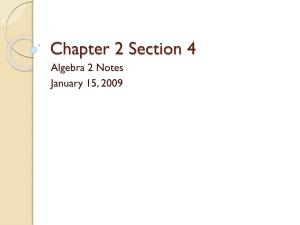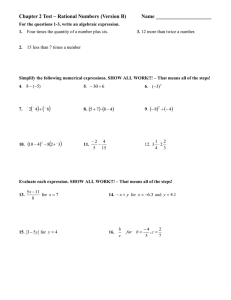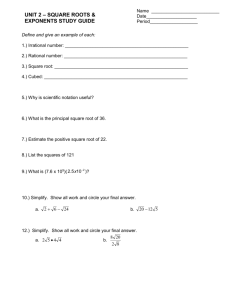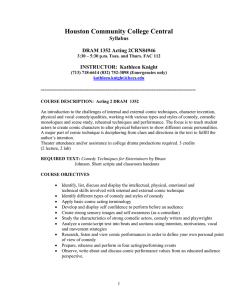Warm up Purpose and Description
advertisement
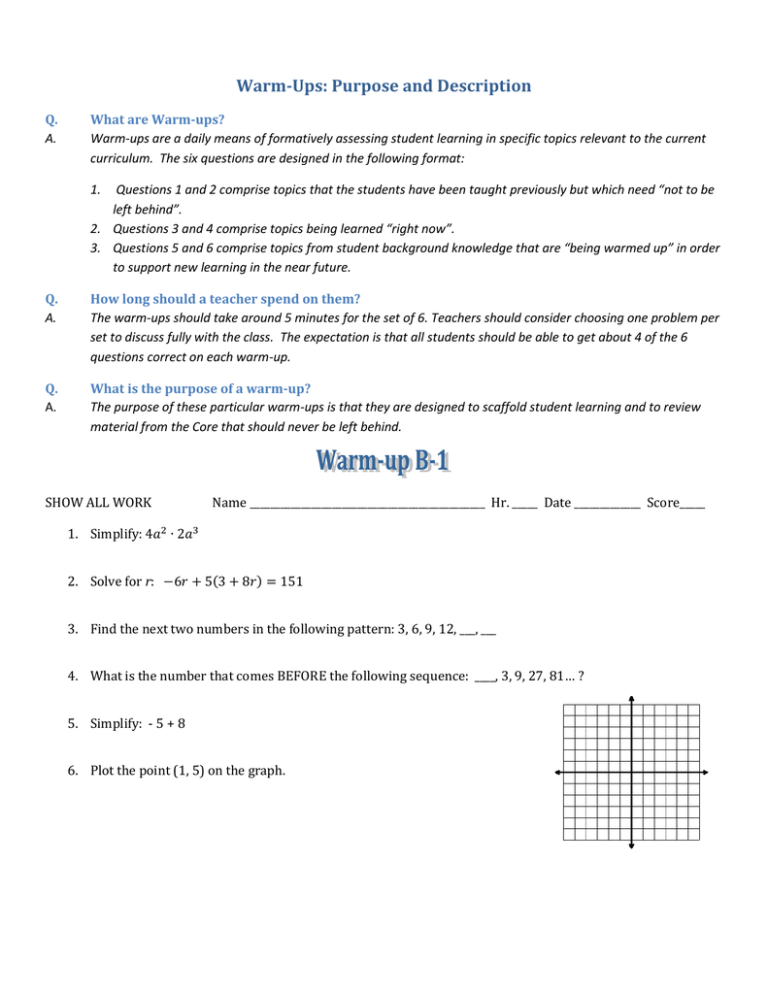
Warm-Ups: Purpose and Description Q. A. What are Warm-ups? Warm-ups are a daily means of formatively assessing student learning in specific topics relevant to the current curriculum. The six questions are designed in the following format: 1. Questions 1 and 2 comprise topics that the students have been taught previously but which need “not to be left behind”. 2. Questions 3 and 4 comprise topics being learned “right now”. 3. Questions 5 and 6 comprise topics from student background knowledge that are “being warmed up” in order to support new learning in the near future. Q. A. How long should a teacher spend on them? The warm-ups should take around 5 minutes for the set of 6. Teachers should consider choosing one problem per set to discuss fully with the class. The expectation is that all students should be able to get about 4 of the 6 questions correct on each warm-up. Q. A. What is the purpose of a warm-up? The purpose of these particular warm-ups is that they are designed to scaffold student learning and to review material from the Core that should never be left behind. SHOW ALL WORK Name ______________________________________________ Hr. _____ Date _____________ Score_____ 1. Simplify: 4𝑎2 ∙ 2𝑎3 2. Solve for r: −6𝑟 + 5(3 + 8𝑟) = 151 3. Find the next two numbers in the following pattern: 3, 6, 9, 12, ___, ___ 4. What is the number that comes BEFORE the following sequence: ____, 3, 9, 27, 81… ? 5. Simplify: - 5 + 8 6. Plot the point (1, 5) on the graph. All Algebra 1 objectives are covered in Secondary I except the following: Never leave the big ideas! Numbers: order, simplify, classify (rational or irrational) 1.1 Represent real numbers as points on the number line and distinguish rational numbers from irrational numbers. 1.2 Compute fluently and make reasonable estimates with rational and irrational numbers. Expressions and Equations: simplify/evaluate/solve Linear relationships (More than 50% of Core): slope/equations/representations/systems Polynomials: Simplify, factor, solve quadratics 3.1 Simplify polynomials and the quotient of monomials. 3.4 Factor polynomials with common monomial factors and factor simple quadratic expressions. 3.5 Solve quadratic equations using factoring or by taking square roots.


